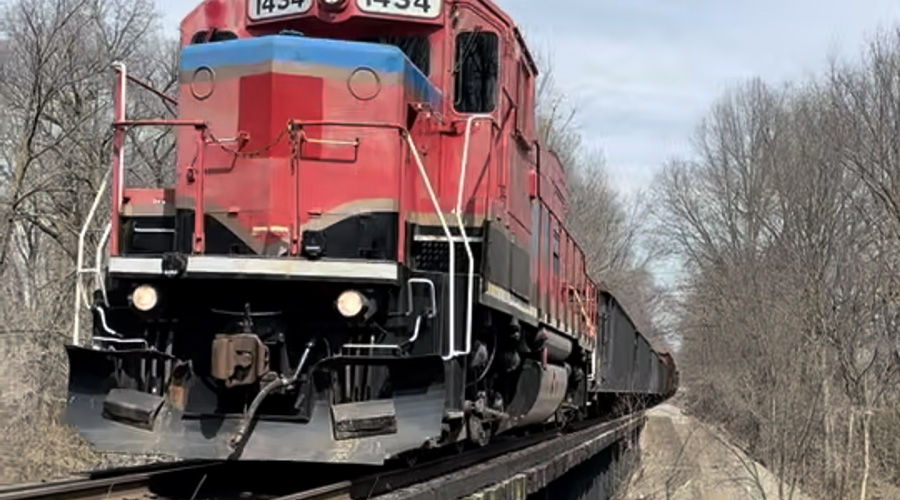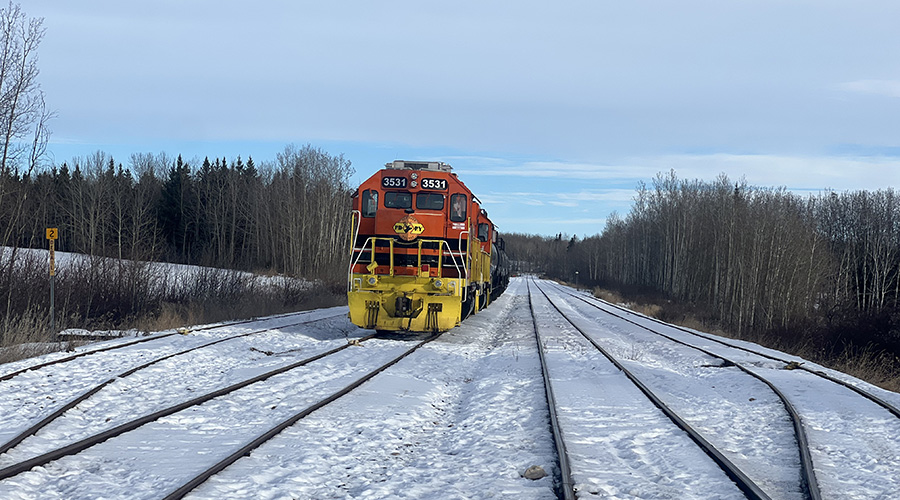Expansion elevates Illinois grain elevator to unit-train status
8/22/2023
By Jeff Stagl, Managing Editor
A short line, its holding company owner, three Class Is and a farmer-owned grain cooperative are trying to prove that a high degree of collaboration can drive business for all at a central Illinois elevator.
Because of their partnering efforts over the past few years, Topflight Grain Cooperative Inc. can handle unit trains instead of a small string of rail cars at its elevator in Pierson, Illinois.
Now, 90- to 110-car unit trains are brought to the facility every week or so by the Decatur & Eastern Illinois Railroad (DREI) — which is owned by Watco — and then loaded by the co-op. The 240-mile short line then moves the trains to CN, CSX or Union Pacific Railroad interchange points. The unit trains move grain — mostly corn and soybeans, but also winter wheat and other crops — to various ports for export.
Previously, the DREI moved separate grain cars for Topflight that were interchanged solely with CSX. But to access other Class Is and accommodate unit trains, the co-op spent $28 million to add grain storage capacity and build additional rail infrastructure at the elevator in Pierson, a small town situated between Springfield, Illinois, and Indianapolis.
 The grain co-op spent $28 million to add grain storage capacity and build additional rail infrastructure at the Pierson elevator. Watco
The grain co-op spent $28 million to add grain storage capacity and build additional rail infrastructure at the Pierson elevator. Watco Topflight — which operates 16 elevators in Illinois’ grain belt — began discussions with all the parties about the project in late 2021. The co-op sought to gain more transportation options and reach more markets, says Dan Ferguson, Watco’s vice president of sales-railroad.
The talks intensified in early 2022 and work began on the project last year. The expansion was completed in March 2023.
The work involved constructing another bin to gain more storage capacity — as in 1.4 million additional bushels — and building or altering track. A 3,700-foot siding was completed in Pierson that Watco/DREI leases to the co-op, and the holding company shifted the short line's main track to accommodate unit trains, says Ferguson.
The multiple parties worked together to reach run-through and interchange agreements, and hammer out other details to make the unit-train grain shipments as seamless as possible, says Ferguson.
One major detail was overcoming a paper barrier between CSX and Watco. The Surface Transportation Board defines a paper barrier as a contractual clause that limits the ability or incentive of a rail line purchaser or lessee to interchange traffic with railroads other than the line’s seller or lessor. The two parties worked jointly to develop a paper barrier waiver.
“This project was very collaborative,” says Ferguson, adding that CSX was very willing and cooperative while developing the waiver.
DREI interchanges with CSX in Terre Haute, Indiana; with CN in Decatur and Neoga, Illinois; and with UP in Tuscola, Illinois. Now, CN can move the export grain unit trains to various Gulf Coast ports while UP can transport them to the West or Gulf Coast and CSX can pull them to the Southeast or Gulf Coast.
The newly expanded Pierson elevator — which now can store more than 3 million bushels of grain — handled its first unit train in April. The facility loaded six or seven or unit trains in April and May, but then train traffic grew lighter in summer, says Ferguson. A mid-summer drought in much of the nation’s Heartland, including Illinois, has negatively impacted grain traffic, he explains.
“It will pick up steam for the fall harvest. That will put the expansion and changes to the test,” says Ferguson. “I think it will be full steam ahead from October to early 2024.”
Watco is forecasting overall flat volume for DREI this year mostly due to the drought, but the short line’s outlook is brighter looking further ahead. In addition to the three Class Is, the railroad interchanges with Norfolk Southern Railway in Decatur.
“Over the long term, we expect growth in volume,” says Ferguson.


